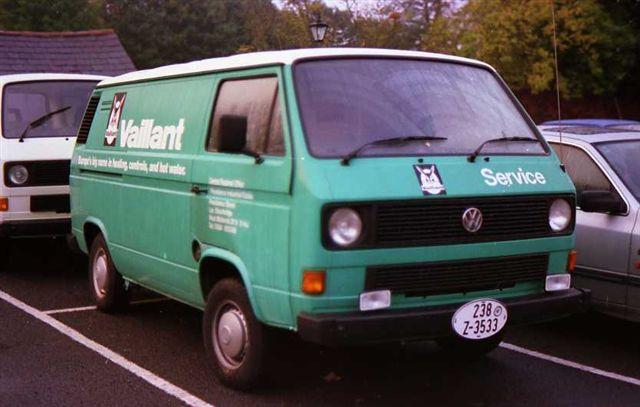- Joined
- 28 Dec 2010
- Messages
- 2
- Reaction score
- 0
- Country

Hi,
I hope someone can help - I have a Viessmann Vitodens 100-W boiler and I am struggling to get the weather compensation working with it. Although the sales literature is full of descriptions of what the WC can do and how much it can save, it is short on how to make it effective, and neither the rep who sold my wife the system nor the installer were much more knowledgeable.
The system I have is:
• Viessmann Vitodens 100-W with WC module
• Horstmann ChannelPlus H37XL Series 2 controller
• Twin wireless thermostats (Drayton Digistat) – running a dual zone pipework set-up
• Viessmann Vitocell 200 cylinder
• TRVs on all radiators
My house is a detached, pre-1930s, non-cavity wall design and has lots of windows and although these are all double-glazed (and we have loft insulation in) the house lets out a fair amount of heat. Also, some rooms get markedly colder than others. Lastly, my wife is permanently cold so likes the temperature up!
The factors above meant that our previous boiler (an old, free-standing Potterton monster) guzzled gas by the shed-load and I am keen that the new system tries to reduce consumption to the minimum (hence going for the weather compensation etc). Having read the literature, it now looks like with our house we should have got the Viessmann 200, which has more sophisticated WC, but it is now too late for that.
My question is how to set up the various controllers etc so that the different rooms in the house remain at a reasonable, consistent temperature without burning more gas than is needed.
In particular:
• Does WC really mean the boiler should be on 24hrs a day as the rep seemed to imply to my wife? While I get that the system is designed to maintain a stable temperature, I assume it can’t use less energy that way than, for example, switching the system off at night and then turning on in the morning to heat the house?
• How, if at all, are the Drayton thermostats and the dual zones compatible with the WC? And can I set the two zones to different temperatures, controlled by the WC?
• How (if at all) do the various controls work with one another? I think the various controls we have are overkill on the system except for the WC itself (which is too simple) but would appreciate any help.
• The WC thinks that the house should be at a low temperature (I guess this is because of the heat loss). The operating instructions say you can “position (or shift) the heating curve so the boiler achieves and maintains the preferred temperature of the householder” but it’s not clear how you increase this temperature, unless it is simply by increasing the temperature of the hot water?
Any thoughts gratefully appreciated.
Thanks a lot,
Simon
I hope someone can help - I have a Viessmann Vitodens 100-W boiler and I am struggling to get the weather compensation working with it. Although the sales literature is full of descriptions of what the WC can do and how much it can save, it is short on how to make it effective, and neither the rep who sold my wife the system nor the installer were much more knowledgeable.
The system I have is:
• Viessmann Vitodens 100-W with WC module
• Horstmann ChannelPlus H37XL Series 2 controller
• Twin wireless thermostats (Drayton Digistat) – running a dual zone pipework set-up
• Viessmann Vitocell 200 cylinder
• TRVs on all radiators
My house is a detached, pre-1930s, non-cavity wall design and has lots of windows and although these are all double-glazed (and we have loft insulation in) the house lets out a fair amount of heat. Also, some rooms get markedly colder than others. Lastly, my wife is permanently cold so likes the temperature up!
The factors above meant that our previous boiler (an old, free-standing Potterton monster) guzzled gas by the shed-load and I am keen that the new system tries to reduce consumption to the minimum (hence going for the weather compensation etc). Having read the literature, it now looks like with our house we should have got the Viessmann 200, which has more sophisticated WC, but it is now too late for that.
My question is how to set up the various controllers etc so that the different rooms in the house remain at a reasonable, consistent temperature without burning more gas than is needed.
In particular:
• Does WC really mean the boiler should be on 24hrs a day as the rep seemed to imply to my wife? While I get that the system is designed to maintain a stable temperature, I assume it can’t use less energy that way than, for example, switching the system off at night and then turning on in the morning to heat the house?
• How, if at all, are the Drayton thermostats and the dual zones compatible with the WC? And can I set the two zones to different temperatures, controlled by the WC?
• How (if at all) do the various controls work with one another? I think the various controls we have are overkill on the system except for the WC itself (which is too simple) but would appreciate any help.
• The WC thinks that the house should be at a low temperature (I guess this is because of the heat loss). The operating instructions say you can “position (or shift) the heating curve so the boiler achieves and maintains the preferred temperature of the householder” but it’s not clear how you increase this temperature, unless it is simply by increasing the temperature of the hot water?
Any thoughts gratefully appreciated.
Thanks a lot,
Simon

